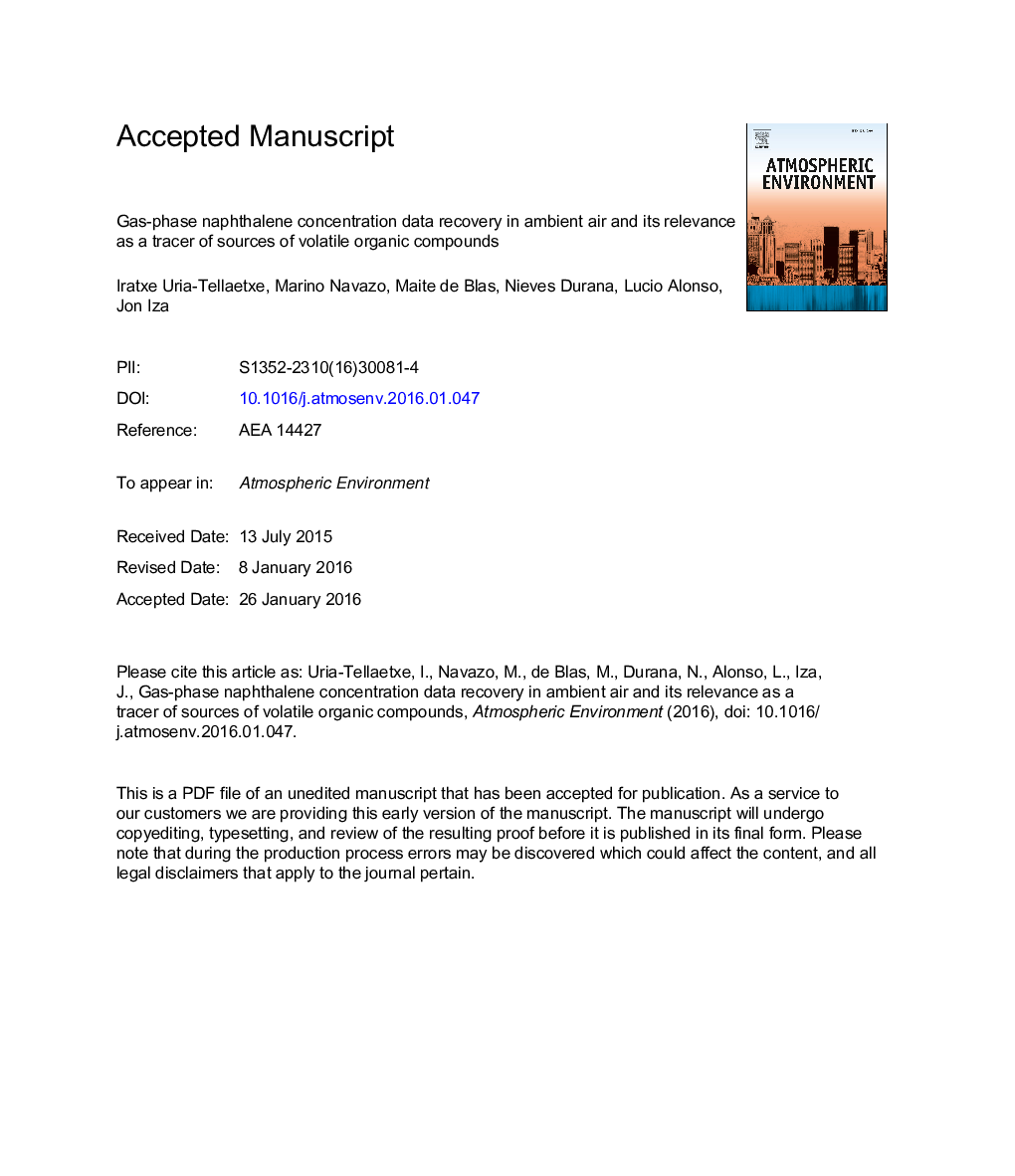| Article ID | Journal | Published Year | Pages | File Type |
|---|---|---|---|---|
| 6336467 | Atmospheric Environment | 2016 | 22 Pages |
Abstract
Despite the toxicity of naphthalene and the fact that it is a precursor of atmospheric photooxidants and secondary aerosol, studies on ambient gas-phase naphthalene are generally scarce. Moreover, as far as we are concerned, this is the first published one using long-term hourly ambient gas-phase naphthalene concentrations. In this work, it has been also demonstrated the usefulness of ambient gas-phase naphthalene to identify major sources of volatile organic compounds (VOC) in complex scenarios. Initially, in order to identify main benzene emission sources, hourly ambient measurements of 60 VOC were taken during a complete year together with meteorological data in an urban/industrial area. Later, due to the observed co-linearity of some of the emissions, a procedure was developed to recover naphthalene concentration data from recorded chromatograms to use it as a tracer of the combustion and distillation of petroleum products. The characteristic retention time of this compound was determined comparing previous GC-MS and GC-FID simultaneous analysis by means of relative retention times, and its concentration was calculated by using relative response factors. The obtained naphthalene concentrations correlated fairly well with ethene (r = 0.86) and benzene (r = 0.92). Besides, the analysis of daily time series showed that these compounds followed a similar pattern, very different from that of other VOC, with minimum concentrations at day-time. This, together with the results from the assessment of the meteorological dependence pointed out a coke oven as the major naphthalene and benzene emitting sources in the study area.
Related Topics
Physical Sciences and Engineering
Earth and Planetary Sciences
Atmospheric Science
Authors
Iratxe Uria-Tellaetxe, Marino Navazo, Maite de Blas, Nieves Durana, Lucio Alonso, Jon Iza,
